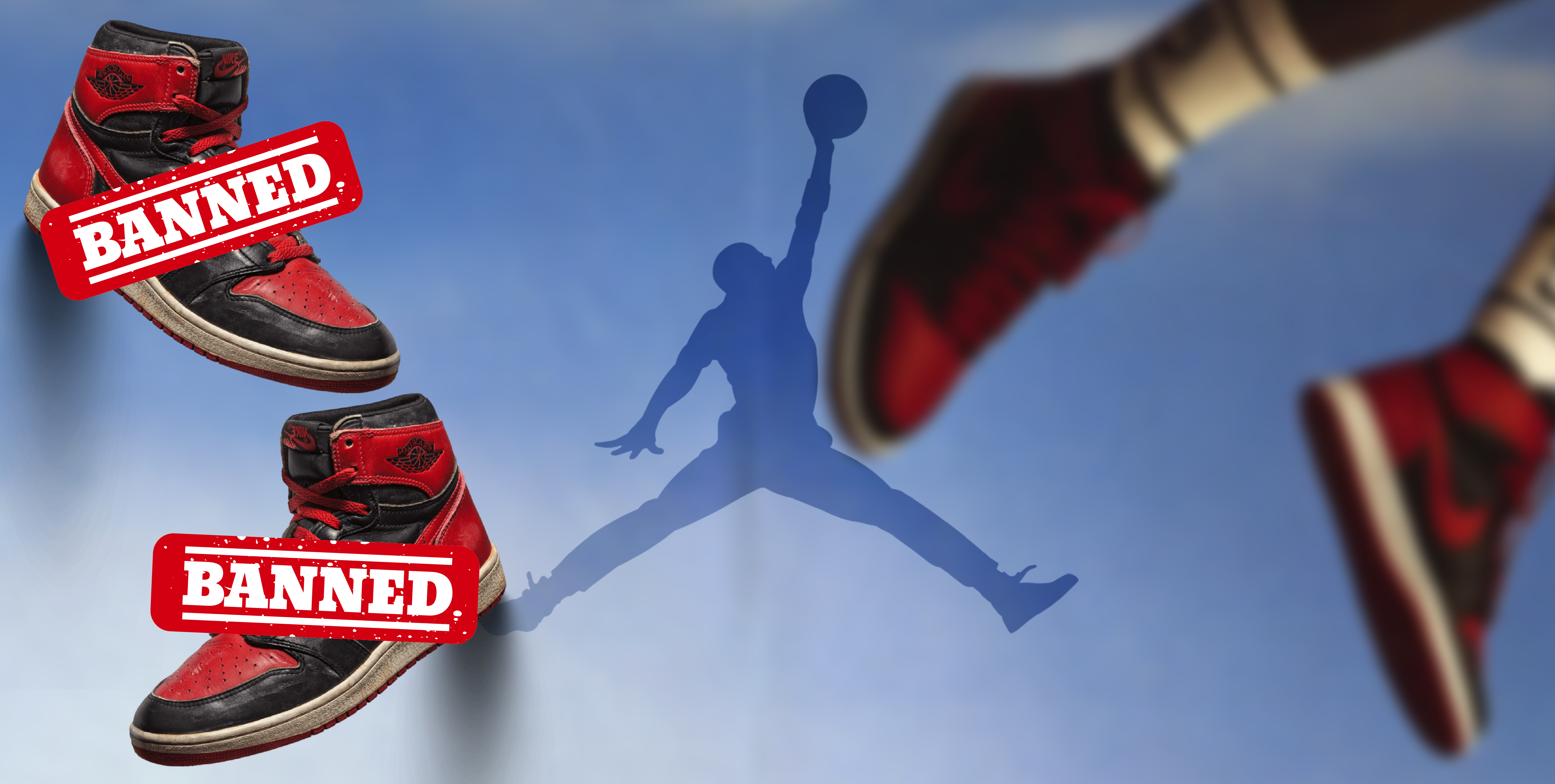When Nike released the Air Jordan 1 in 1985, it was unlike any other basketball shoe on the market. With its striking design, bold colours, and high-top silhouette, the Air Jordan 1 was an instant hit among basketball fans and sneakerheads alike. The design was appreciated by street culture, making basketball shoes a new way to represent urban fashion. But the shoe's real claim to fame came not from its performance on the court, but from an unexpected source:
the NBA's ban
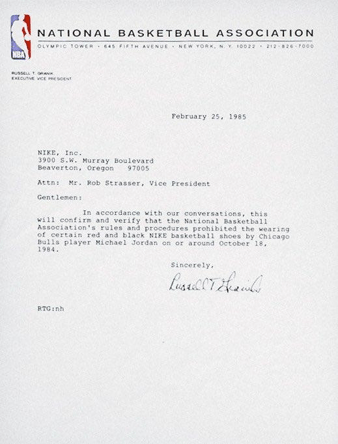
At the time, the NBA had strict rules about players' footwear. All shoes worn on the court had to be predominantly white, with only a small amount of color allowed for accents. When Nike introduced the Air Jordan 1 in black and red, it was deemed in violation of the league's rules. Michael Jordan himself was warned by the NBA and fined $5,000 every time he wore the shoe during a game. This unexpected controversy created the perfect opportunity for Nike to launch an ingenious marketing campaign.
FUN RUMOR: Nike was paying Michael Jordan an extra $5,000 per game for him to wear the shoes during pre-game practice.
Nike saw the NBA's ban as an opportunity to capitalize on the shoe's notoriety. Rather than trying to fight the ban, Nike embraced it, positioning the Air Jordan 1 as a renegade shoe for rebels who dared to challenge authority. The brand launched an ad campaign that emphasized the shoe's rebelliousness and nonconformity, playing up the ban as evidence of the shoe's coolness.
The campaign's tagline, "Banned by the NBA," was a stroke of genius. It immediately grabbed attention and gave the shoe a sense of exclusivity and rebelliousness. Nike also released a commercial featuring Jordan himself, in which he declares, "Who says man wasn't meant to fly?". The commercial was a huge hit, cementing the Air Jordan 1's status as a cultural icon.
Michael Jordan 'Banned' Commercial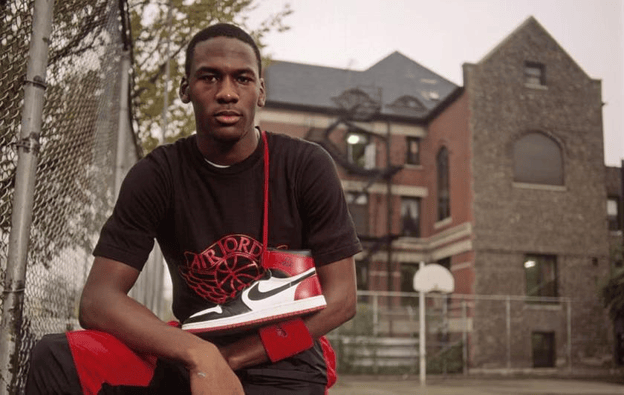
The attention to detail of how they approached the NBA’s ban into a single video advertisement in order to create a buzz about the shoe comes from the fact that Jordan just stood there as the “Icon”, with the narrator saying that the NBA may have BANNED the shoes, but they can’t stop YOU from wearing them. That was a marketing “checkmate”, as the ad caught the attention of all youngsters to come and support the shoe since psychologically-speaking, something that is considered as “banned”, automatically becomes more attractive. Nike made people who wore the shoe in the streets believe that they are part of a “protest”, and thus the brand achieved the most important thing in business:
An Unbreakable BOND between them and the Customer!
Nike's marketing campaign around the Air Jordan 1 is widely regarded as one of the most successful in the history of sneaker culture. The brand's willingness to embrace the NBA's ban and position the shoe as a symbol of nonconformity and rebellion helped it gain a devoted following that has lasted for decades. Today, the Air Jordan 1 is still one of the most popular sneakers on the market and Nike's marketing campaign remains a case study in how to turn controversy into cultural cachet.
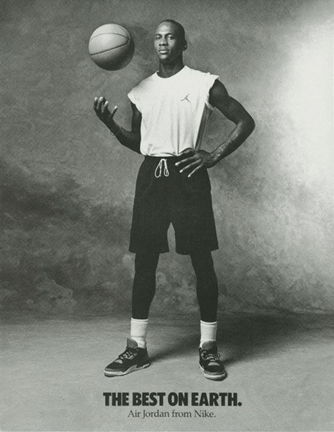
You know what’s crazy though?
Michael Jordan didn’t even want to attend the first meeting with Nike because he wanted to be sponsored by Adidas. So in a different reality, Michael Jordan never wore Nike’s shoes and instead of Air Jordans, the “Air Superstars” exist.
You know what’s even crazier?
The NBA never actually banned the Air Jordan 1. When Michael signed the deal with Nike, they made him wear a Black and Red shoe called “Air Ship”, which was released in 1984 and had a very similar design to the Air Jordans. Michael Jordan was wearing Air Ships in his rookie season, while the Air Jordan’s were still being designed. Since the NBA sent the warning about the coloring and design (for the Air Ships), Nike took the opportunity and labeled the Air Jordan 1’s as the “banned shoe”.
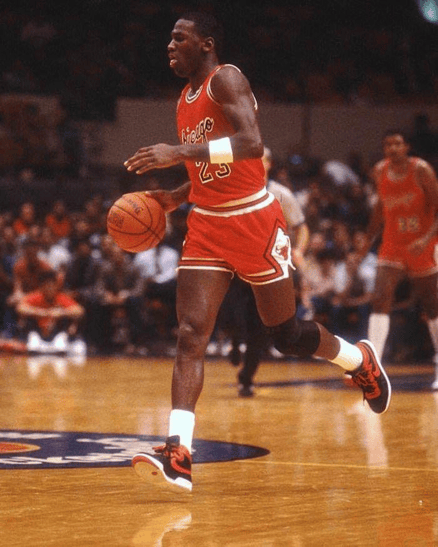
In conclusion, the story of Nike's marketing campaign around the banned Air Jordan 1 is a testament to the power of creativity and innovation. By embracing controversy and turning it into an opportunity, Nike was able to create a cultural icon that has stood the test of time. Today, the Air Jordan 1 remains a symbol of rebellion and nonconformity, and Nike's marketing campaign serves as a model for anyone looking to create a buzz around their product.
